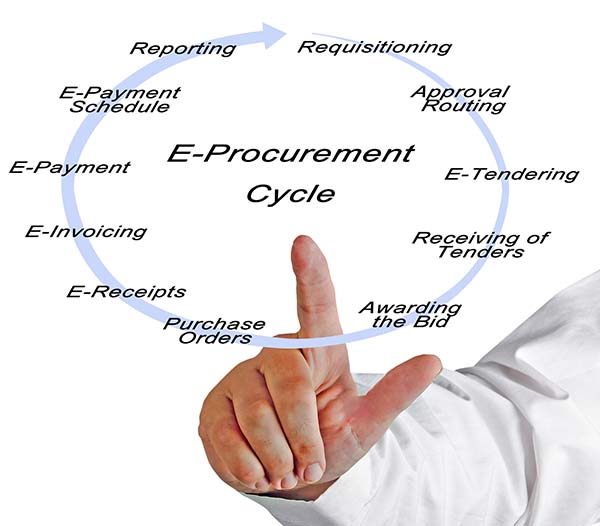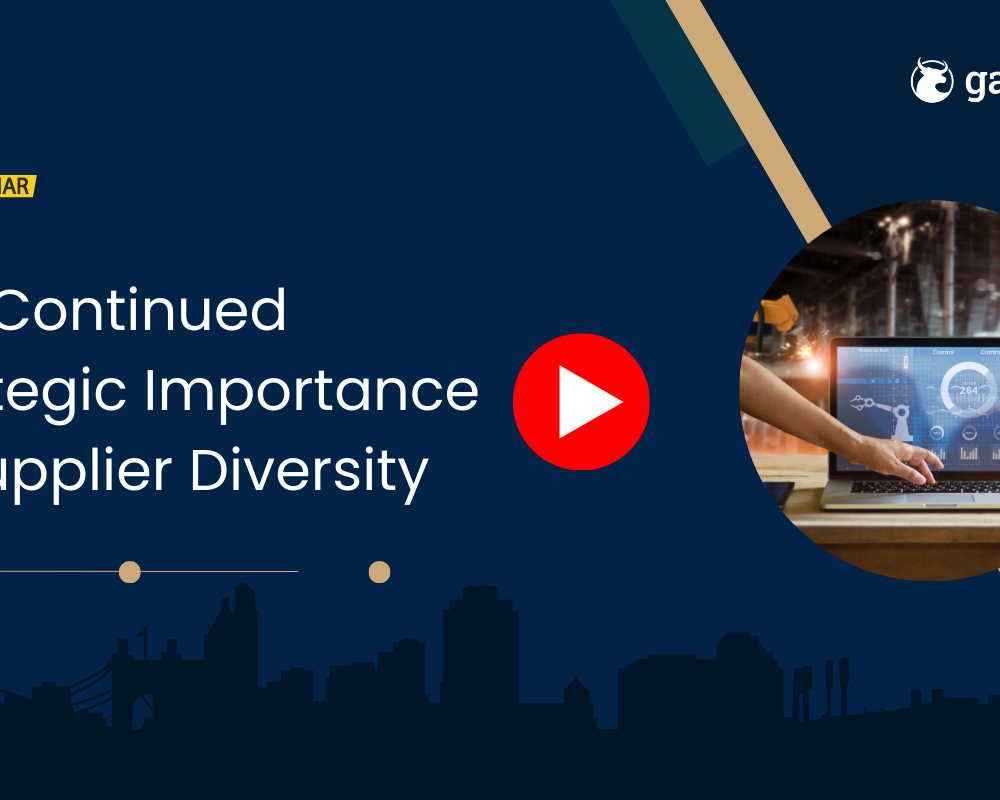
Gainfront Procure-to-Pay
When it comes to procurement, no business should ever use a one-size-fits-all solution. Why? Because every business is unique. So are its requirements.
Gainfront’s Procure-to-Pay solution is a next-gen guided eProcurement software that manages buying, approvals, compliance, payments, and vendors across the globe.
Procure-to-Pay is the process that typically integrates buying and accounts payable systems to create higher efficiencies. The solution exists within the larger procurement management process and involves four vital stages: Choosing goods and services, implementing compliance and order, receiving and reconciliation, invoice and payment.
Digitizing your enterprise’s procurement process with Gainfront’s Procure-to-Pay solution can strengthen your compliance process and control among suppliers, contracts, regulations, buyers, and accounts payable. This will help enterprises purchase from preferred suppliers at agreed rates without having to go through manual paperwork and a spreadsheet process.
What does Gainfront’s Procure-to-Pay do?
-> Actively manage and enhance global spend
-> Consolidates all manual trade processes to minimize errors
-> Simplifies catalog maintenance, saves time, and frees up resources.
-> Allows the approval of new vendors
-> Improves bottom-line savings to maximize the value of sourcing negotiations.
Procure to Pay Process
The Procure-to-Pay is a coordinated and integrated process that is taken to complete the goods and services requirement timely at an affordable price. This process consists of various subsequent stages, from identifying the business need to invoice approval and vendor payment. All of the stages in a procure-to-pay are required to be implemented in a stringent order.
The procure-to-pay process flow
Depending on the enterprise’s practice and the kind of requirement they have, the procurement team can choose to complete the needed and relevant stages of the procure-to-pay process.
Step 1: Identify the needs of business requirement
Step 2: Create a formal purchase requisition
Step 3: Purchase requisition approval submission
Step 4: Create a PO/spot buy for unmanaged category buys, one-time unique purchases, or low-value commodities
Step 5: Purchase order approval
Step 6: Goods receipt for the goods and services supplier delivered
Step 7: Supplier performance based on the goods and services delivered
Step 8: Invoice approval after the receipt of the goods is approved
Step 9: Vendor payment once the invoice is approved

Procurement Strategies and Best Practices
Effective procurement strategies are one of the most sought-after concepts by the enterprises. Having said that, the process of creating a flawless and powerful procurement strategy is anything but easy.
Generally, procurement strategies depend on several factors such as budget, purchase timeline, cost of ownership, etc. An efficient procurement strategy often focuses on minimizing risks, reducing costs, and growing organically.
- Maintain transparency in procurement: Your procurement team needs to be able to see records, purchase orders, and other technical details at any stage during their procurement journey in real-time.
- Simplify your inventory: One of the best procurement practices or strategies is keeping inventory at an optimal level.
- Engage with your vendors: Get more data on your vendors’ performance so that you can engage with them in a meaningful way which will ensure your procurement needs are met timely.
- Digital contract management: Reduce risk and maximize transparency by moving the contract management process to the cloud. Digital contract management allows for a centralized and easily accessible system which can increase cost savings while storing your procurement documents securely.
- Integrate Procurement Processes: Integrating procurement processes will make sure a stable, streamlined system from start to finish while minimizing bottlenecks.
Difference between Procurement and Purchasing
Often, people outside of procurement mistake procurement for purchasing, and the two terms are commonly used interchangeably. Most of the time, the tasks those functions have are quite similar to each other. However, only a few know the difference, and fewer know actually there is a difference between the two in the first place.
Procurement and purchasing are two different approaches. Enterprises should choose either one based on their business requirements. Small businesses may choose the purchasing process just to keep the process simple and uncomplicated, whereas enterprises and organizations may choose the procurement process to make it a vital part of their corporate strategy.
What is Procurement?
Procurement is the process of identifying, choosing, and obtaining required goods and services from a third-party supplier via a direct purchase, bidding, or a tendering process while making sure a timely delivery of the agreed quality and quantity.
What is Purchasing?
Purchasing is one of the set of functions that associate with the acquisition of the goods and services when an enterprise has a requirement. Purchasing is only a small subset of the procurement process. The rest of the procurement process includes tasks such as ordering, expediting, receiving goods and services, and payment processing.

Difference between Procurement and Sourcing
Undeniably, procurement and sourcing have several similarities. However, to understand both of the, let’s take a look into what actually makes them different.
What is Sourcing?
Sourcing is a process which is used to create supply channels that procurement utilizes to acquire supplies for an enterprise’s operations.
Sourcing creates supply channels that procurement uses to acquire supplies for an organization’s operations. It also revolves around what’s necessary to build and maintain supplier relationships and vetting vendors. Sourcing aims at who is making what supplies.
What is Procurement?
Procurement is the process that involves procuring goods and/or services, raw materials, inputs, etc. for the enterprise’s requirements for their operations. In addition, procurement focuses on what supplies are needed.
Procurement assures a steady flow of inputs, supplies etc. On the other hand, sourcing guarantees the supply chain that makes it possible.
An efficient eProcurement solution smoothes out both the processes of procurement and sourcing. A comprehensive eProcurement solution will be a combination of the procurement and sourcing systems.
-> A single platform for sourcing and procurement to work with vendors
-> Minimizes errors via digital systems and processes
-> Ease to handle vendors by handing off to procurement, and back to sourcing for reviews, etc.
Direct Procurement Strategies
Direct procurement is the process of acquiring goods and/or services, raw materials or any type of resources that are used in the core services of an enterprise. The goods and services that are purchased via the process of direct procurement will eventually find their way to the end customer or the consumer of the business. For instance, a food product production company will require certain raw ingredients that they will use to make cake, biscuits, or wafers. The process of procuring these raw ingredients will come under the gamut of direct procurement.
Why is direct procurement essential for enterprises?
Direct procurement processes are not only vital to the success of the product but also the success of the enterprise. When implemented correctly, direct procurement brings supply chain resilience.
Now to accomplish resilience in the supply chain process, procurement should make sure that product elements are available at the right time, cost, quality, quantity, location, etc. that the vendors or suppliers abide by the company’s policy, function well, and are not dangerous. The nature of direct procurement is usually complicated, in terms of both the end-to-end process, technical nature of elements, provincial laws & compliance, and global supply chain.
Indirect Procurement Strategies
What is indirect procurement?
In simple terms, indirect procurement is when someone purchases the goods and/or services that are required by the enterprises or organizations for their core operations. Now these supplies are what the enterprises need for their basic day-to-day operations. Having said that, they don’t add to the enterprise’s bottom line.
Some of the indirect procurement examples are travel expenses, computer software and hardware, utilities, employee management and development.
What are the challenges of indirect procurement?
Indirect procurement is a broad category that consists of hundreds of spend categories and thousands of vendors. Enterprises believe that managing indirect procurement expenditure is impossible due to a high turnover in vendors and a huge amount of transactions.
The result? A lack of understanding, visibility, and control over indirect spend. If your enterprise doesn’t have an efficient process in place that shows you exactly how much your enterprise is spending in the name of procurement, there is no way you can know how much money you are spending in indirect procurement.
Procurement Contract Management
Contract management plays a vital part in the procurement cycle process of an enterprise. Usually, contracts are inseparably linked to relationships with suppliers, 3rd-party service providers, and other sourcing resources or entities.
If the procurement teams depend on manual processes and spreadsheets to manage all the stages of buy-side contracts, it causes nothing but inefficiencies, time-consuming tasks, incurs higher costs, and puts the enterprise at risk.
That is why contract management for procurement teams is a must for an efficient and well-managed process.
Here are the 9 practices of contract management that will help your enterprise enhance the efficiency and effectiveness of your procurement process.
1. Improves Vendor Management & Service-Level Agreements
2. Obliterate Manual Process of Creating Purchase & Negotiation Orders
3. Simplifies Procurement Processes
4. Easy Monitoring and Managing Expenses & Terms
5. Enhances Supplier Performance Visibility
6. Assigns Roles and Responsibilities
7. Vendor Relationship Management
8. Planning and Forecasting
9. Initiatives in the Public Interest for Creating a Sustainable Future

Automated Procurement System
Automated Procurement is the process of automating manual, repeating steps and labor-intensive activities that take place in the procurement process. When enterprises simplify procurement workflows to self-execute, IT automation frees up the procurement team so that they can focus on more productive and efficient business activities at the same time speeding up the procurement process and minimizing errors.
4 Procurement Processes Every Enterprise Should Automate
- Purchase Order Processing— Purchase orders are the right example for a repeatable process that’s fit for automation.
- Purchase Requisitions— The process usually needs multiple approval stages that could be expedited with automation.
- Invoice Approvals— Invoice approval feature can easily automate the invoice approval process which results in saving time for your procurement team and makes it simpler to approve invoices.
- Record-keeping— Integrate your current systems to automatically update all records for a highly-accurate audit trail.

eProcurement Software Solution
eProcurement software solution solves multiple burning issues that take place in an enterprise with best-in-class procurement functions which evolve with business demands. More than anything, it enhances your entire end-to-end buying and payment cycle with automated procure-to-pay features.
-> Increase cost savings and reliability by consolidating the supply base
-> Simplify spend by minimizing maverick purchases
-> Grab offers and discounts by combining orders and purchasing in volumes
-> Negotiate price and other terms with strategic vendors
Why Gainfront’s Procure-to-pay solution?
-> Minimize maverick spend with inventory management and easily automate vendors’ invoice matching, approvals, and payment to enhance cost savings.
-> Get your hands on a complete oversight of your invoices and use data to make better decisions via augmented analytics.
-> Faster analysis, effective reporting, and efficient invoice matching drive early payment discounts and lets your procurement team focus on better things.
-> Collaborate with all your vendors in real-time and keep all your conversations in one place.


